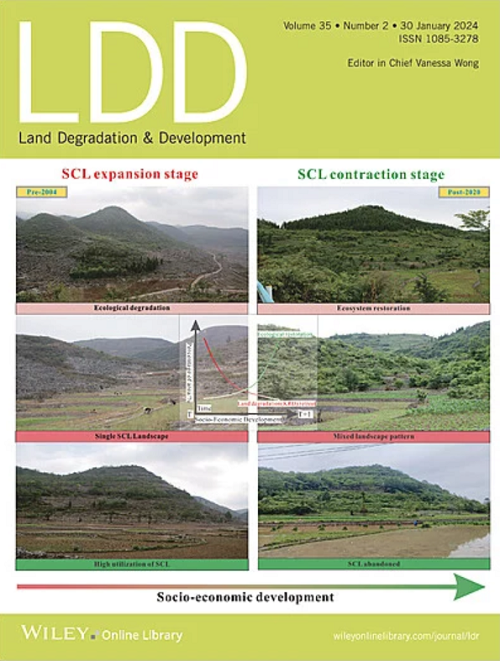微生境对亚热带岩石露头丰富地区先锋灌木火棘幼苗补充的影响:退化喀斯特灌丛恢复的启示
IF 3.7
2区 农林科学
Q2 ENVIRONMENTAL SCIENCES
引用次数: 0
摘要
人类活动导致了亚热带喀斯特生态系统广泛的基岩暴露和植被退化。在这些退化的景观中,破碎的岩石-土壤微生境对物种更新的影响仍然知之甚少,特别是在它们对幼苗补充的影响方面。我们假设岩石微生境的变化通过改变热液微条件影响幼苗的建立,从而影响招募结果。本研究旨在评估异质微生境对先驱和优势灌木火棘(Pyracantha fortuneana)幼苗招募的影响,并为岩石露头丰富地区更有效的恢复策略提供见解。通过埋种和播种试验,我们对四种典型的微生境:岩沟(RG)、岩坑(RP)、平地(EF)和裸地(BL)进行了为期一年的监测,以量化种子萌发、幼苗出苗、成活和幼苗生长的各个阶段。此外,还监测了采收阶段的土壤温度和湿度、空气温度和湿度以及光合有效辐射。结果表明,四种微生境对种子最终萌发的影响无显著差异,而RG和EF的幼苗存活率显著高于BL,而幼苗生物量显著低于BL。这表明异质微生境对种子萌发的影响更大,而不是种子萌发。土壤湿度对幼苗出苗和成活有正向调节作用,土壤湿度对幼苗生长有负向影响,温度对幼苗生长有正向影响。这一发现强调了在灌丛管理中,特别是在基于种子的恢复的早期阶段,整合微站点选择和出现后热液调节干预的重要性。本文章由计算机程序翻译,如有差异,请以英文原文为准。
Effects of Microhabitat on Seedling Recruitment of the Pioneer Shrub Pyracantha fortuneana in Subtropical Rocky Outcrop‐Rich Areas: Implications for Degraded Karst Shrubland Restoration
Human activities have led to widespread bedrock exposure and vegetation degradation in subtropical karst ecosystems. In these degraded landscapes, the effects of fragmented rock‐soil microhabitats on species regeneration remain poorly understood, particularly in terms of their influence on seedling recruitment. We hypothesized that variations in rocky microhabitats impact seedling establishment by modifying hydrothermal micro‐conditions, thereby shaping recruitment outcomes. This study aims to evaluate the impact of heterogeneous microhabitats on seedling recruitment of the pioneer and dominant shrub Pyracantha fortuneana
求助全文
通过发布文献求助,成功后即可免费获取论文全文。
去求助
来源期刊

Land Degradation & Development
农林科学-环境科学
CiteScore
7.70
自引率
8.50%
发文量
379
审稿时长
5.5 months
期刊介绍:
Land Degradation & Development is an international journal which seeks to promote rational study of the recognition, monitoring, control and rehabilitation of degradation in terrestrial environments. The journal focuses on:
- what land degradation is;
- what causes land degradation;
- the impacts of land degradation
- the scale of land degradation;
- the history, current status or future trends of land degradation;
- avoidance, mitigation and control of land degradation;
- remedial actions to rehabilitate or restore degraded land;
- sustainable land management.
 求助内容:
求助内容: 应助结果提醒方式:
应助结果提醒方式:


